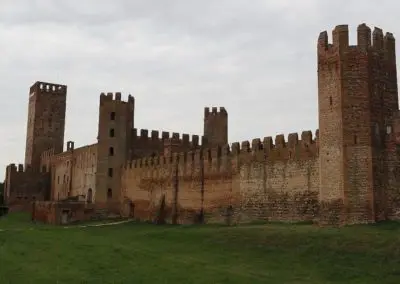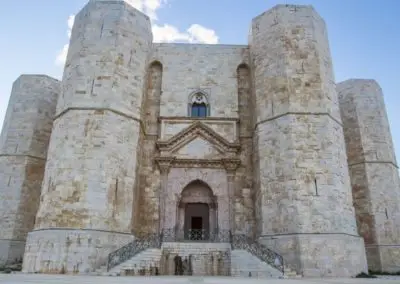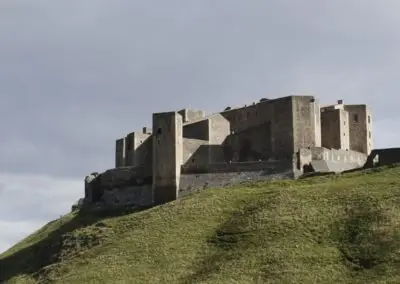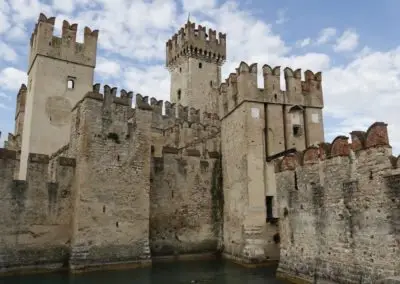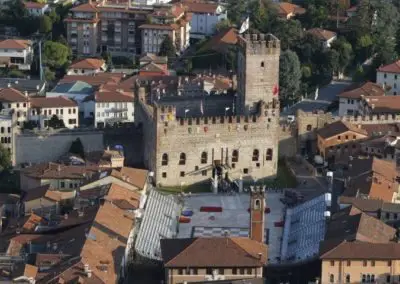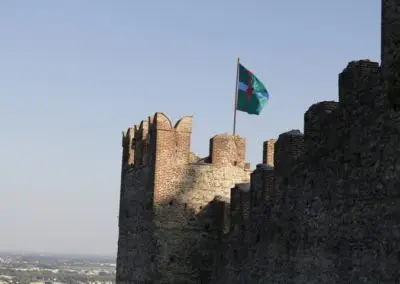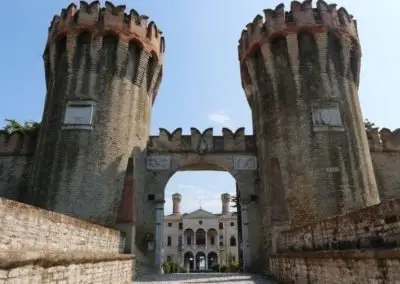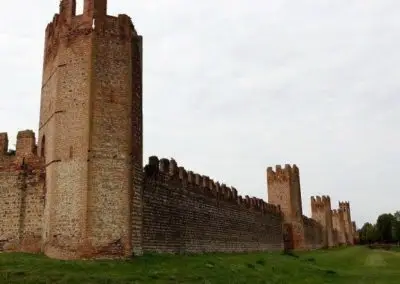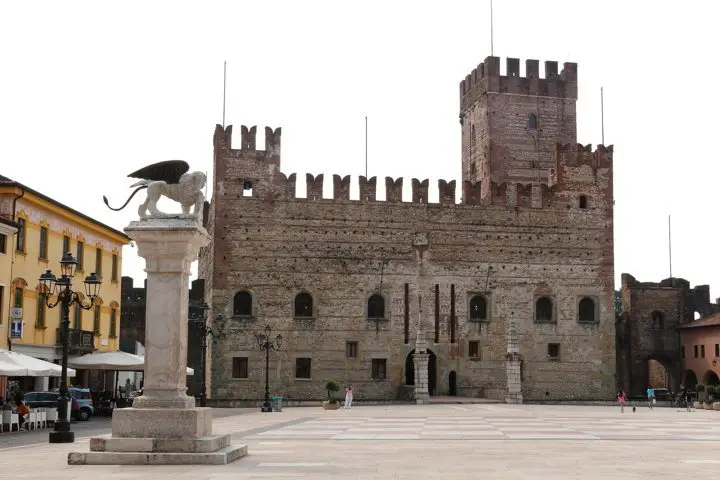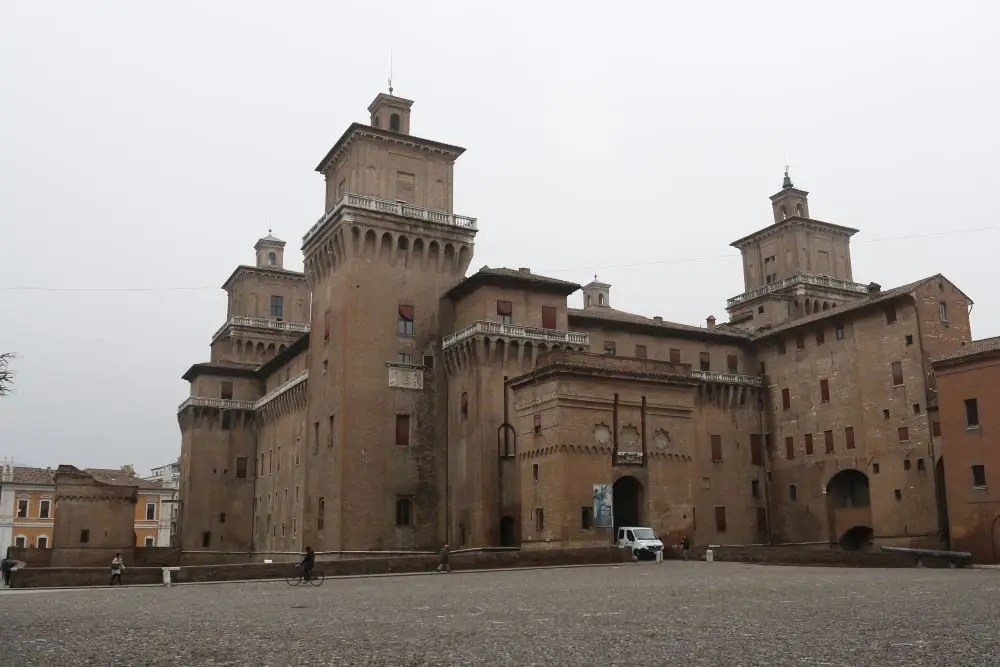
Middle Ages, Dark Ages, medieval sites
Middle Ages, known also as “Dark Ages” normally placed in unknown time, saw the birth of the main universities and of the most important Gothic cathedrals. With the end of the Roman Empire, the invasion of the barbarians forced peoples to leave the plains taking refuge on the heights, where it was easier to defend them self. A phenomenon called “encastellation” that sees everywhere in Europe a proliferation of fortified settlements. As a result, we are at the beginning of the tenth century.
Often they reused the sites for their position well defensible and with a wide view. First of all, these locations were the center of the castellieri (fortified boroughs), and most of them were the centers where the people lived in the pre-Roman times.
The fortified building and the walled village
The Castle can be, without a specific rule, a fortified building. As well as a whole walled village. And even a village without any fortification. In fact, the Castle is a sort of chameleon that originates and develops with continuous transformations, considering also the different eras. As a result, it can be immeasurably large and incorporates a whole town. Or it has a very small size, like a home, without boundary walls or special defensive structures. Like also with few openings and a single entrance well defended.
The rules of the Castle in the Middle Ages
The Castle was the feud lord home. As well as the administrative and politic center, like also the army garrison headquarter. Often with the overlap of the functions without much distinction.
The Castle is for sure the symbol of the Middle Ages. Though the term is used to indicate the fortresses that date far later on. In the most common form, the “classic” Castle with tall towers dates back approximately from the year 1000 to 1400. But the physiognomy changes completely when they used the firearms during sieges at fortresses.
The meaning of the towers
To settle in a place and defend himself, the man has always fortified the towns. He created also a number of peripheral outposts to control the access roads and to require tolls. But, above all, to report in advance the arrival of potential enemies.
It was important to create stable buildings of observation where the tower was the best compromise between cost and effectiveness. In fact, the location was on a high ground with wide visibility, to see the other towers. And the reason was to create an optical “chain”, in order to communicate with the main Castles. As a result, they used the smoke during the day, the fire at night and the bells with the fog. Frequent also, for long distances, the use of carrier pigeons. Hence in each area, there was a quite complex system where the bells and the isolated houses were not extraneous.
The medieval Castle
It can be a simple tower with minimum fence dimensions. As well as in more complex forms enhanced by several orders of walls and moats. Also with the division into compartments and with multiple entrances.
About the Castles, the synonyms abound for which it is useful to make some distinctions:
The Castle: it refers to the fortified architecture complex of the Middle Ages period. Even temporary or permanent establishment of the feudal lord or otherwise of a recognized authority.
The Rocca: synonymous with the castle but defines the fortresses without residential area. And in particular those of the “transition” (the fifteenth century).
The Manor house: in the Middle Ages is the main house of the vavasor, solid and large. Hence the building was in a dominant position in the center of the manor. It differs from the Castle for the lack of towers and fortified structures.
The Lords and the Princes
Around the 11th century, late Middle Ages begins the half a millennium in which Italian civilization reaches its peak. In fact, in the north of Italy, there is the development of municipalities. That then will become lordships and principalities, with their courts and their intrigues. But also with their splendid culture flowering that’s made Italy so great in the world. To the south, the Normans take the place of Arabs and Byzantines creating a strong kingdom which then will go into the hands of the Swabian dynasty with Emperor Frederick II that will further enhance the state centralizing it bureaucratically. As a result, his court will be the center of culture and common ground of Greek, Jewish and Arab traditions.
In this chapter we will have some information of the most relevant families in a land with 2 parties: The Guelfs (supporting the Pope) and the Ghibellines (supporting the Holy Roman Emperor):
In the land of the emperor:
We find the families as Della Torre, the Visconti, and the Sforza. Like also the Scaligers, the Gonzaga, the Ezzelini, the Carraresi and Da Camino.
In the land of the pope:
Hence here we have The Este, Da Polenta, Bentivoglio, and Ordelaffi. As well as the Manfredi, the Alidosi, the Malatesta. And also the Trinci, the Varano, the Gabrielli, the Da Montefeltro, and the Baglioni.
In Tuscany:
As a result, in this region, we have the Medici family.
In our “Suggested tours” section, we propose some themed day excursions with local guides. And now, let’s find this incredible period of our history per each region:

